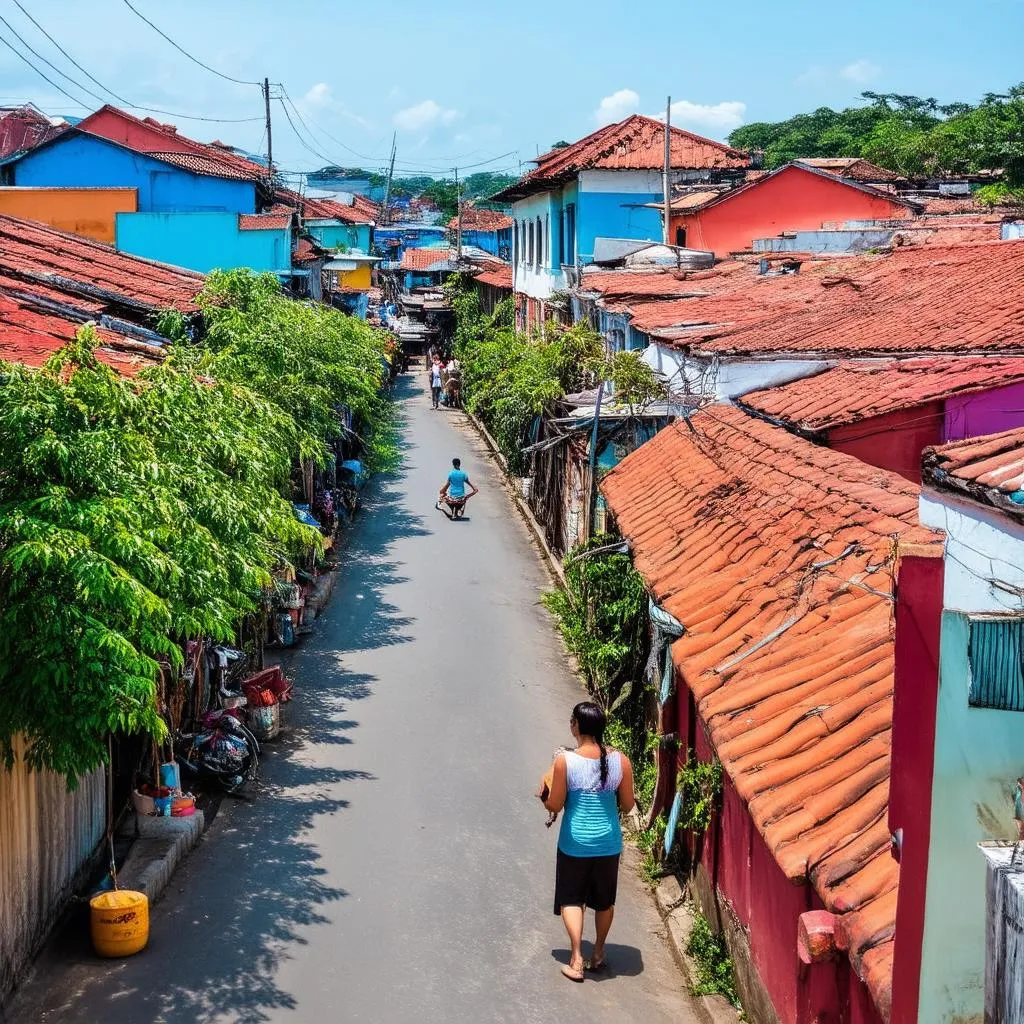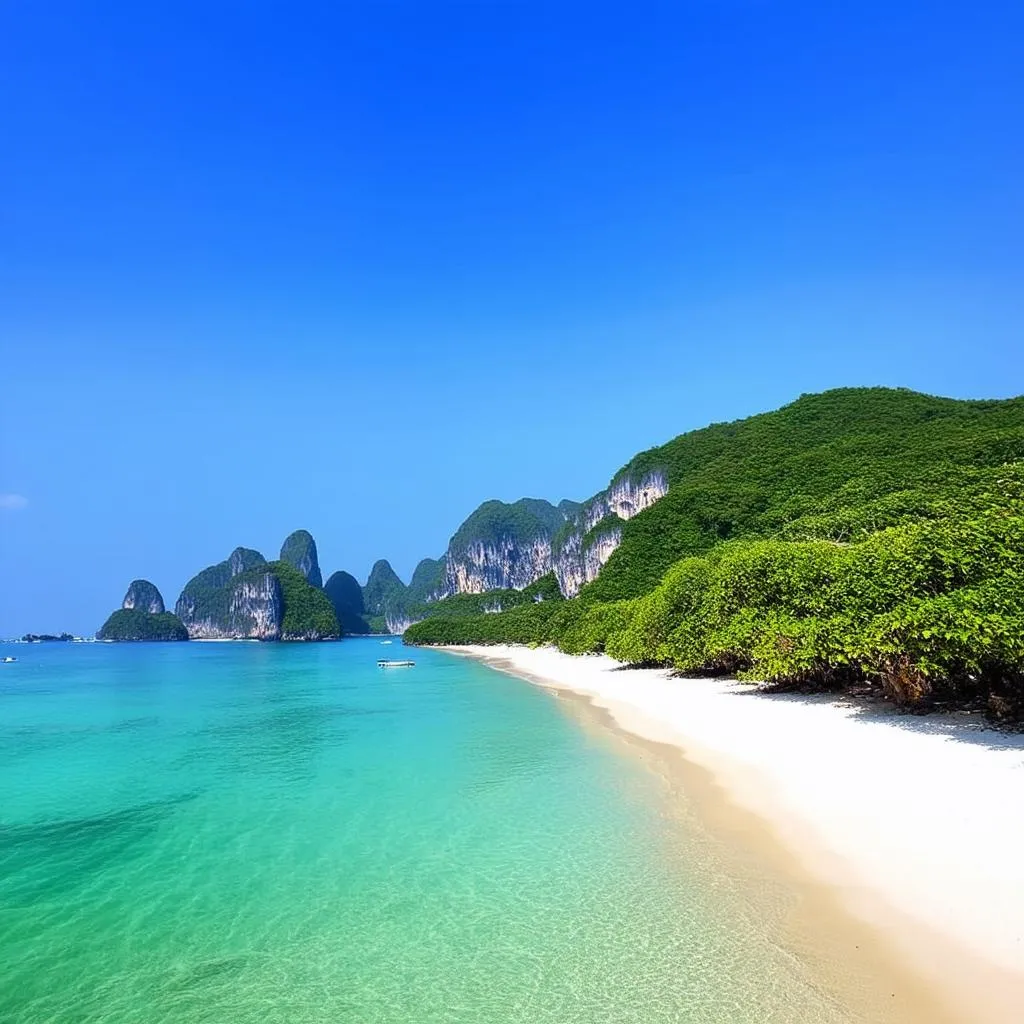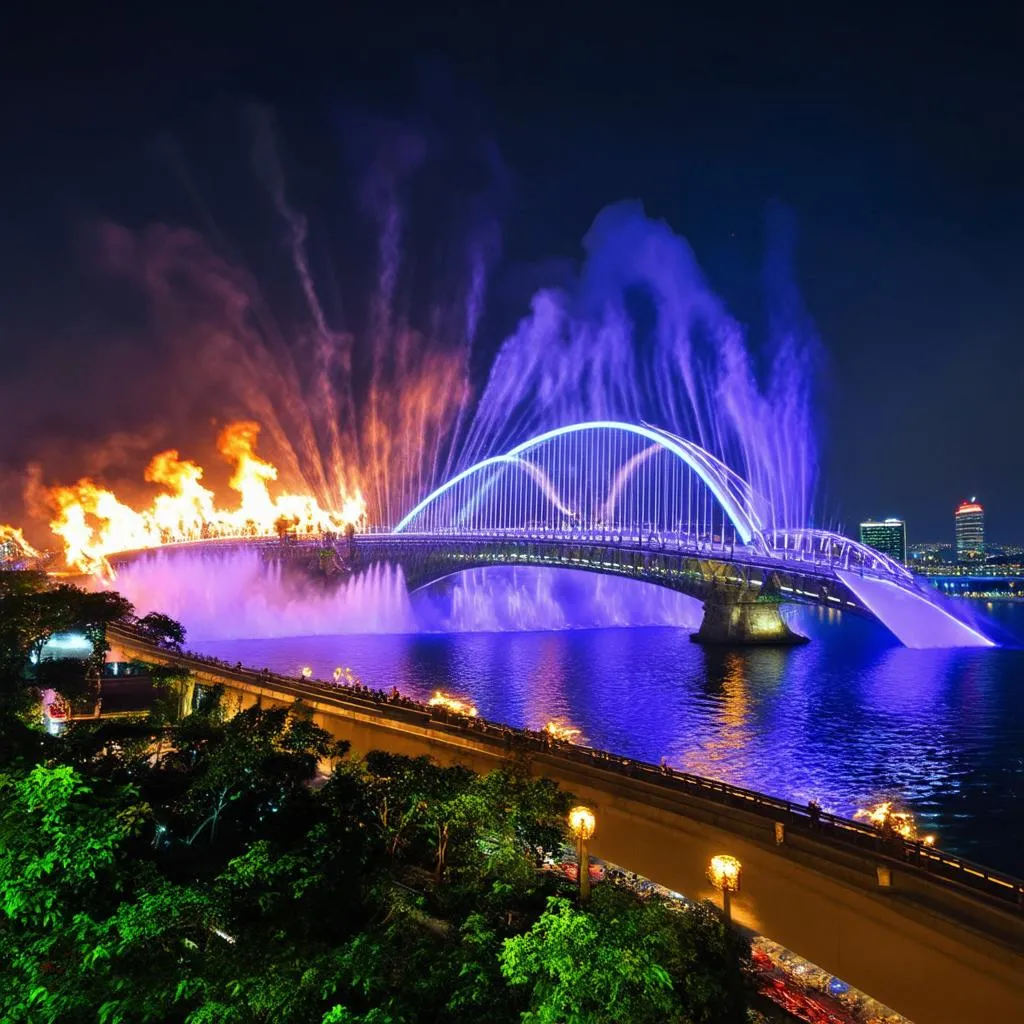Imagine yourself strolling through the vibrant streets of Hoi An Ancient Town, a UNESCO World Heritage Site, where ancient Chinese shop houses stand proudly alongside brightly colored lanterns. The scent of freshly baked banh mi wafts through the air, inviting you to sample local delicacies. Later, you find yourself relaxing on the pristine beaches of Da Nang, soaking up the sun and enjoying the clear turquoise waters. This is just a glimpse of the magic that awaits you in Hoi An and Da Nang, two captivating destinations in Vietnam.
Hoi An: A Blend of History, Culture, and Charm
Hoi An, also known as Faifo, is a treasure trove of history and culture, offering a unique experience for every traveler. Its ancient streets, lined with traditional architecture, transport you back in time.
What to See & Do in Hoi An
Hoi An Ancient Town: Explore the narrow, winding streets of this UNESCO World Heritage Site, marveling at the well-preserved architecture of centuries-past. Don’t miss the Japanese Covered Bridge, a symbol of Hoi An’s rich history.
Tailor Shops: Hoi An is renowned for its skilled tailors, so take advantage of the opportunity to get custom-made clothes at affordable prices.
Lantern Festival: If you’re visiting Hoi An during the full moon, don’t miss the magical Lantern Festival. The streets are illuminated with thousands of colorful lanterns, creating a breathtaking spectacle.
Hoi An Riverside: Take a leisurely stroll along the Thu Bon River, where you can admire the traditional boats and enjoy the peaceful atmosphere.
Cua Dai Beach: Just a short distance from Hoi An, Cua Dai Beach offers a chance to relax, swim, and soak up the sun.
Food Lover’s Paradise
Hoi An is a foodie’s dream come true. From street food stalls to fine-dining restaurants, you’ll find a wide array of culinary delights to tantalize your taste buds.
Must-Try Dishes:
- Banh Mi: This delicious Vietnamese sandwich is a local favorite.
- Cao Lau: A unique noodle dish only found in Hoi An.
- White Rose Dumplings: Delicate dumplings with a translucent, white wrapper.
- Hoi An Fried Wantons: Crispy, savory wantons filled with pork and shrimp.
How to Get to Hoi An
By Air: The nearest airport is Da Nang International Airport (DAD). From there, you can take a taxi or bus to Hoi An (about 30 minutes).
By Train: You can also reach Hoi An by train. The closest train station is Da Nang Railway Station.
By Bus: Buses are a convenient and affordable way to travel to Hoi An from other cities in Vietnam.
Tips for Planning Your Trip to Hoi An
Best Time to Visit: The best time to visit Hoi An is during the dry season, from March to August.
Accommodation: There are a wide range of accommodation options in Hoi An, from budget-friendly guesthouses to luxurious resorts.
Transportation: Hoi An is a very walkable city, but you can also use bicycles, motorbikes, or taxis to get around.
Frequently Asked Questions about Hoi An
Q: How long should I stay in Hoi An?
A: Two to three days is a good amount of time to explore the main attractions and enjoy the local culture.
Q: What is the best way to get around Hoi An?
A: Walking is the best way to explore the ancient town. For longer distances, you can rent bicycles or use taxis.
Q: What are some of the best places to eat in Hoi An?
A: Some popular restaurants include Morning Glory, Mango Mango, and Cafe 9.
Q: Is it safe to drink the tap water in Hoi An?
A: It is not recommended to drink the tap water in Hoi An. It is best to drink bottled water.
Da Nang: A Coastal Gem with Modern Charm
Da Nang, a bustling coastal city, offers a perfect blend of modern amenities and natural beauty. Known for its beautiful beaches, impressive architecture, and delicious seafood, Da Nang is a city that has something to offer everyone.
Top Attractions in Da Nang
My Khe Beach: Enjoy the pristine white sands and crystal-clear waters of My Khe Beach, also known as “China Beach.”
Marble Mountains: Explore the five marble mountains, each with its own unique characteristics. The caves and temples within these mountains are a testament to the rich history and culture of the region.
Dragon Bridge: Admire the impressive Dragon Bridge, which comes alive with fire and water shows every weekend night.
Son Tra Peninsula: Discover the scenic Son Tra Peninsula, home to pristine beaches, lush forests, and ancient temples.
Ba Na Hills: Take a cable car ride to Ba Na Hills, a breathtaking mountain resort with stunning views, a French village, and thrilling amusement park rides.
What to Eat in Da Nang
Seafood: Da Nang is a seafood paradise. Be sure to try fresh seafood dishes like Bun Cha Ca (grilled fish noodles), Banh Xeo (crispy Vietnamese crepe), and Banh Can (steamed rice cakes).
How to Get to Da Nang
By Air: Da Nang International Airport (DAD) is served by numerous airlines.
By Train: You can reach Da Nang by train from Hanoi, Hue, and other cities in Vietnam.
By Bus: Buses are a convenient and affordable way to travel to Da Nang.
Tips for Planning Your Trip to Da Nang
Best Time to Visit: The dry season (from March to August) is the best time to visit Da Nang for sunny weather and ideal beach conditions.
Accommodation: Da Nang has a wide range of accommodation options, from budget-friendly guesthouses to luxury hotels.
Transportation: Da Nang is a city that is easy to get around using taxis, buses, or motorbikes.
Frequently Asked Questions about Da Nang
Q: How long should I stay in Da Nang?
A: Three to four days is a good amount of time to explore the main attractions and experience the city’s vibrant culture.
Q: What are the best beaches in Da Nang?
A: My Khe Beach is the most popular beach in Da Nang, but Non Nuoc Beach and Lang Co Beach are also worth visiting.
Q: What are some of the best things to do in Da Nang?
A: Visit the Marble Mountains, explore the Son Tra Peninsula, take a cable car ride to Ba Na Hills, and enjoy the nightlife in the city.
Hoi An & Da Nang: A Perfect Blend
Hoi An and Da Nang are perfect complements to each other. They offer a unique combination of history, culture, and natural beauty that will leave a lasting impression on your travels.
A Personal Story
On my recent trip to Vietnam, I was completely captivated by the charm of Hoi An and the modern energy of Da Nang. I spent a few days in Hoi An, exploring the ancient town and learning about its rich history. Then, I went on to Da Nang, where I spent time relaxing on the beautiful beaches, trying delicious seafood, and exploring the city’s vibrant nightlife. It was a perfect blend of relaxation and adventure, and I highly recommend it to any traveler looking for a unique and unforgettable experience.
Feng Shui Harmony
In Feng Shui, Hoi An’s ancient architecture and the flowing Thu Bon River represent the harmonious balance of yin and yang. The vibrant colors and bustling streets bring energy and vitality, while the surrounding mountains provide a sense of groundedness and stability. Da Nang’s coastal location brings the element of water, which symbolizes purification and renewal. This combination creates a sense of balance and harmony for those who visit these destinations.
Conclusion
Planning a trip to Hoi An and Da Nang is a wonderful choice for anyone seeking a unique and unforgettable travel experience. This comprehensive guide will help you plan your journey and discover the many hidden gems that these two cities offer.
Don’t forget to share your own experiences and insights in the comments below!
For more travel tips and inspiration, visit https://travelcar.edu.vn/a-good-place-to-travel-in-november/.
 Hoi An Ancient Town
Hoi An Ancient Town
 Da Nang Beach
Da Nang Beach
 Dragon Bridge Da Nang
Dragon Bridge Da Nang

